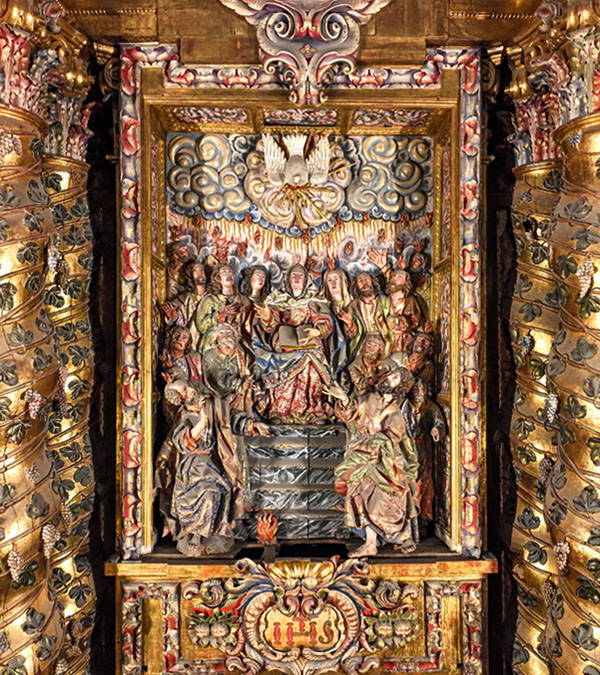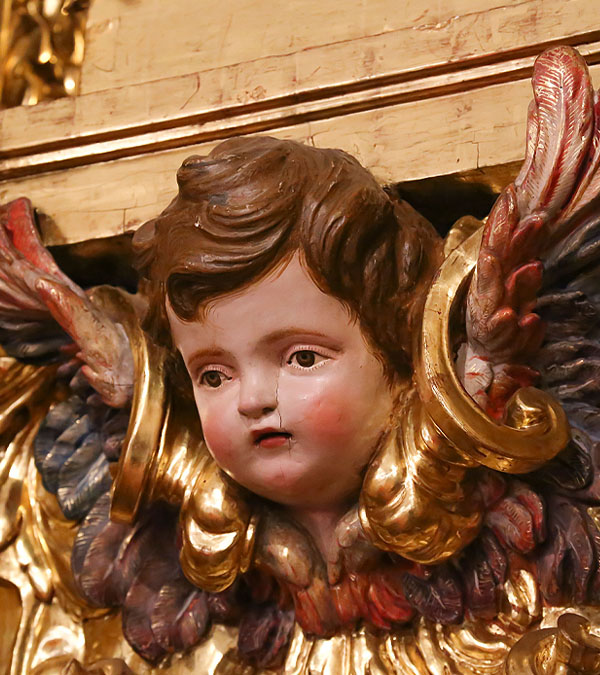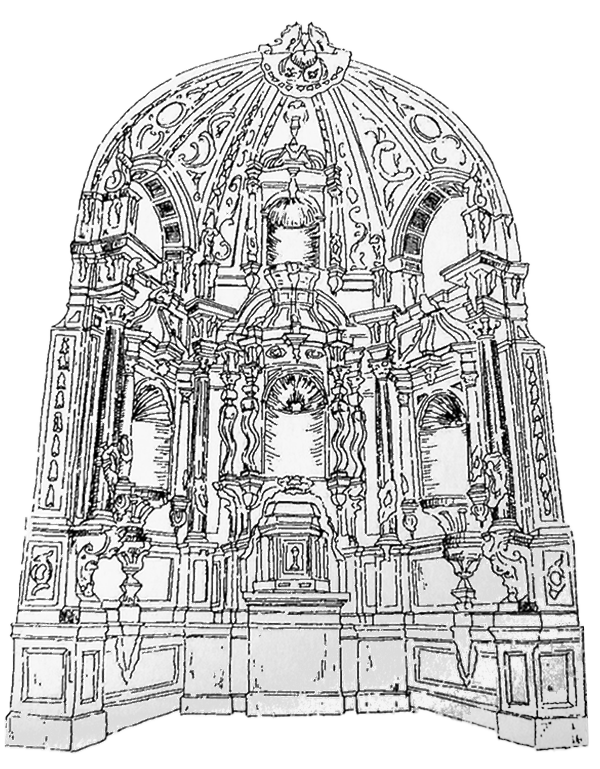ALTARPIECES_
WHAT IS AN ALTARPIECE?
An altarpiece is a liturgical piece of furniture arranged behind the altar table (its etymology determines this: retro-tabulum). It displays effigies of sacred figures, representations of gospel scenes, or moments from the life of Christ or the saints. Each image is imbued with deep meaning.
The altarpiece can be made with different materials (wood, stone, marble, jasper, metal, etc.) but always with a common purpose: to transform the space they occupy to narrate gospel episodes.
We are looking at carved works of art in immense settings that transform space, propose models of conduct to the faithful, and constitute true interdimensional “portals” that connect the faithful with transcendence while providing a place for the apotheotic manifestation of the sacred.
Here, in this sacred space, everyone finds themselves face to face with something much bigger than themselves, something deeply mysterious and eternally beautiful.



THE ALTARPIECE THROUGH HISTORY_
The evolution of the altarpiece over time and in different cultural environments has been diverse. Although it did not emerge during Baroque art, its origin is much older. However, it was in the 17th and 18th centuries when it reached its maximum splendor and spectacularity, completely transforming the interior of churches. Initially, in early Christian basilicas, the altar was highlighted with an architectural structure called a ciborium, which could contain figurative or symbolic elements. Over time, large plates and tables were added to support the iconography.
During the Romanesque period, mural painting in the apses was used to transform architecture into a narrative presence. In the Gothic period, the altarpiece increased in size and its architectural structure gained importance. This piece of furniture continued to develop plastically according to the theoretical principles of various artistic styles, from late Gothic to Neoclassical, passing through early Renaissance, Mannerism, Baroque, Churrigueresque, Rococo, and Classicism. Each style contributed new dimensions and elements to the design of the altarpiece, reflecting the evolution of the artistic postulates of each era.

BAROQUE ALTARPIECES_
Historically, enlightened and post-enlightened mentalities maintained a negative perception of Baroque art, seeing it as a profound degradation of art, which led to the destruction of many works. It was not until the first third of the 20th century that its appreciation began to recover, reaching the indisputable recognition and esteem of our days. This change in perception allowed the Baroque to be revalued and appreciated in its complexity and artistic richness.
Baroque art, developed in the 17th and 18th centuries, does not respond to a single impulse or a uniform movement, but comprises several dynamic stages that came to coexist in the same territory and time. Each region, influenced by its own circumstances and characteristics, developed its own distinctive style. Generally, its design includes an architectural structure where painted scenes, reliefs, and full-round images are distributed. Sometimes, this structure facilitates the interpretation of iconographic elements, while other times it becomes so complicated that it hinders its reading, emphasizing the visual impact of the whole.
In the 17th century, the Baroque was built on the foundations of the 16th century, highlighting the influence of “Romanism” and the experience of El Escorial. The reinvention of classical orders and strict adherence to the postulates of the Council of Trent defined the theoretical bases of its practice. The altarpiece, conceived as an exaltation of the Eucharist, symbolized the defense of the real presence of Christ in the Eucharist and reflected the magnificence of its promoters. Neo-Baroque, valid today, has evolved towards an expression of a universe of appearance and disillusionment, reflecting the scarcity of opportunities, growing social inequality, and confusion between reality and fiction, plunging society into a reality of lights and shadows with a strong component of anxiety.

PLAN DE SOSTENIBILIDAD TURÍSTICA DE SALAMANCA




